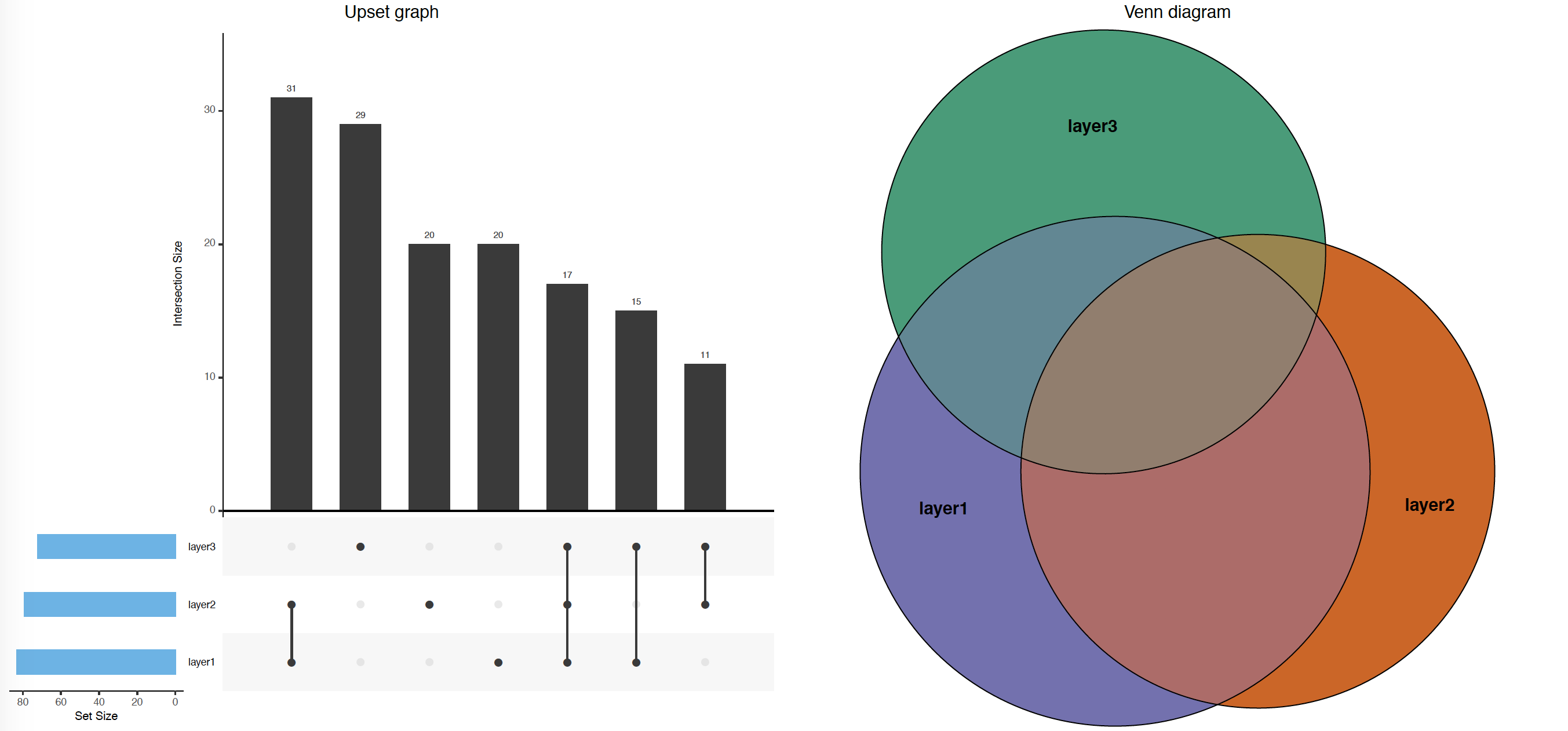This repository contains python and R scripts to help process genomic coordinates files (BED, GFF).
Reverse complement of the bed_to_gff script. This script takes a GFF file and converts it into a BED formatted file (BED12 or BED6). Selection on the molecular type and feature type to extract in the arguments.
usage: gff_to_bed.py [-h] --gff_file GFF_FILE [--bed12] [--no_bed6]
[--mol_type MOL_TYPE] [--feature_type FEATURE_TYPE]
[--id_as_features] [--path PATH] [--name NAME]
[--verbose] [--discard] [--skip_exon_number]
example run :
./gff_to_bed.py -f test_files/tiny_dmel_sample_r5-57.genes.gff -b12 -v
Creates BED files from a given GFF file with specific filters. In BED12,
groups all the elements of a selected molecular type according to their
feature type.
optional arguments:
-h, --help show this help message and exit
--gff_file GFF_FILE, -f GFF_FILE
Name of the GFF file to be converted
--bed12, -b12 Creates the corresponding BED12 file
--no_bed6, -nb6 Prevents from creating the corresponding BED6 file
--mol_type MOL_TYPE, -mt MOL_TYPE
The molecular type (column 3 of the GFF file) selected
for the BED files, default is exon
--feature_type FEATURE_TYPE, -ft FEATURE_TYPE
The feature type (column 9 of the GFF file) selected
for the BED files, default is Parent
--id_as_features, -id
Will set the ID of each element as a string containing
all its features
--path PATH, -p PATH The location where BED files will be created, default
is current working directory
--name NAME, -n NAME The name of the BED files, default is the GFF file
name
--verbose, -v Will outpout in stdout the command arguments and the
name of each element raising a warning in consistency
check
--discard, -d Will discard the element raising a warning in strand
consistency and overlapping check
--skip_exon_number, -s
If set, the program will skip addiing _# for exon
number.
Reverse complement of the gff_to_bed script. This script takes a BED file and converts it into a GFF formatted file. Works on BED12 and BED6.
usage: bed_to_gff.py [-h] --bed_file BED_FILE --source SOURCE --mol_type
MOL_TYPE [--is_bed12] [--make_gff3]
example run :
./bed_to_gff.py -f tiny_dmel_sample_r5-57.genes.bed6 -m exon -s dmel --make_gff3
./bed_to_gff.py -f tiny_dmel_sample_r5-57.genes.bed12 --is_bed12 -m exon -s dmel --make_gff3
Creates GFF file from a given BED file. Note that the features of the GFF are
created based on the ID of the BED file.
optional arguments:
-h, --help show this help message and exit
--bed_file BED_FILE, -f BED_FILE
Name of the BED file to be converted
--source SOURCE, -s SOURCE
Name of the source
--mol_type MOL_TYPE, -m MOL_TYPE
Name of the molecular type of elements from BED
--is_bed12 Specify this argument if bed file is bed12 formated
and contain blocks
--make_gff3 Specify if you want to make the output a proper gff3
This script makes a diagnosis graph to assess the level of mutual overlap between three sets of genomic coordinates. Given three BED files, it outputs a Venn diagram and an Upset plot like the one here.
Wether or not you apply the --expand argument as TRUE or FALSE, you get frequency of overlaps in terms of number of regions (--expand FALSE) or in terms of number of basepairs (--expand TRUE, by default).
Usage: /Users/flochlay/Documents/ThesisSweetThesis/These/cisReg/mapping_toolkit/summary_region_overlaps.R [options]
An R script to perfrom overlaps between 3 BED files and extract main features.
example run :
Rscript --vanilla summary_region_overlaps.R --bed1 test_files/sample1.bed --bed2 test_files/sample2.bed --bed3 test_files/sample3.bed --out test_files/overlap_summary.pdf --name1 layer1 --name2 layer2 --name3 layer3 --expand TRUE
Options:
--bed1=CHARACTER
First BED file
--bed2=CHARACTER
Second BED file
--bed3=CHARACTER
Third BED file
--name1=CHARACTER
Name of 1st overlap
--name2=CHARACTER
Name of 2nd overlap
--name3=CHARACTER
Name of 3rd overlap
--out=OUT
path and name of the output PDF
--expand=CHARACTER
If set as FALSE, overlap frequencies are based on region counts rather than base pair counts (usefull for large dataset)
-h, --help
Show this help message and exit
